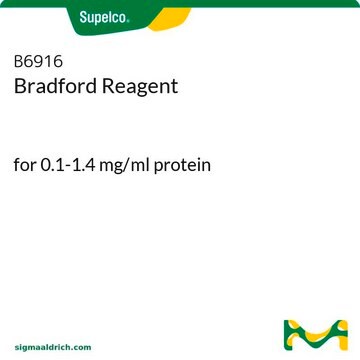257621
2,2-Di(4-tert-octylphenyl)-1-picrylhydrazyl, free radical
Sinonimo/i:
2,2-Bis[4-(1,1,3,3-tetramethylbutyl)phenyl]-1-(2,4,6-trinitrophenyl)hydrazinyl, 2,2-Di(4-tert-octylphenyl)-1-picrylhydrazyl, DPPH
Scegli un formato
Scegli un formato
About This Item
Prodotti consigliati
Stato
solid
Livello qualitativo
Punto di fusione
171 °C (dec.) (lit.)
λmax
531 nm
Gruppo funzionale
nitro
Temperatura di conservazione
2-8°C
Stringa SMILE
CC(C)(C)CC(C)(C)c1ccc(cc1)N([N]c2c(cc(cc2[N+]([O-])=O)[N+]([O-])=O)[N+]([O-])=O)c3ccc(cc3)C(C)(C)CC(C)(C)C
InChI
1S/C34H44N5O6/c1-31(2,3)21-33(7,8)23-11-15-25(16-12-23)36(26-17-13-24(14-18-26)34(9,10)22-32(4,5)6)35-30-28(38(42)43)19-27(37(40)41)20-29(30)39(44)45/h11-20H,21-22H2,1-10H3
CLOCMRDQPYXVKP-UHFFFAOYSA-N
Descrizione generale
Applicazioni
Codice della classe di stoccaggio
11 - Combustible Solids
Classe di pericolosità dell'acqua (WGK)
WGK 3
Punto d’infiammabilità (°F)
Not applicable
Punto d’infiammabilità (°C)
Not applicable
Scegli una delle versioni più recenti:
Possiedi già questo prodotto?
I documenti relativi ai prodotti acquistati recentemente sono disponibili nell’Archivio dei documenti.
I clienti hanno visto anche
Filtri attivi
Il team dei nostri ricercatori vanta grande esperienza in tutte le aree della ricerca quali Life Science, scienza dei materiali, sintesi chimica, cromatografia, discipline analitiche, ecc..
Contatta l'Assistenza Tecnica.










